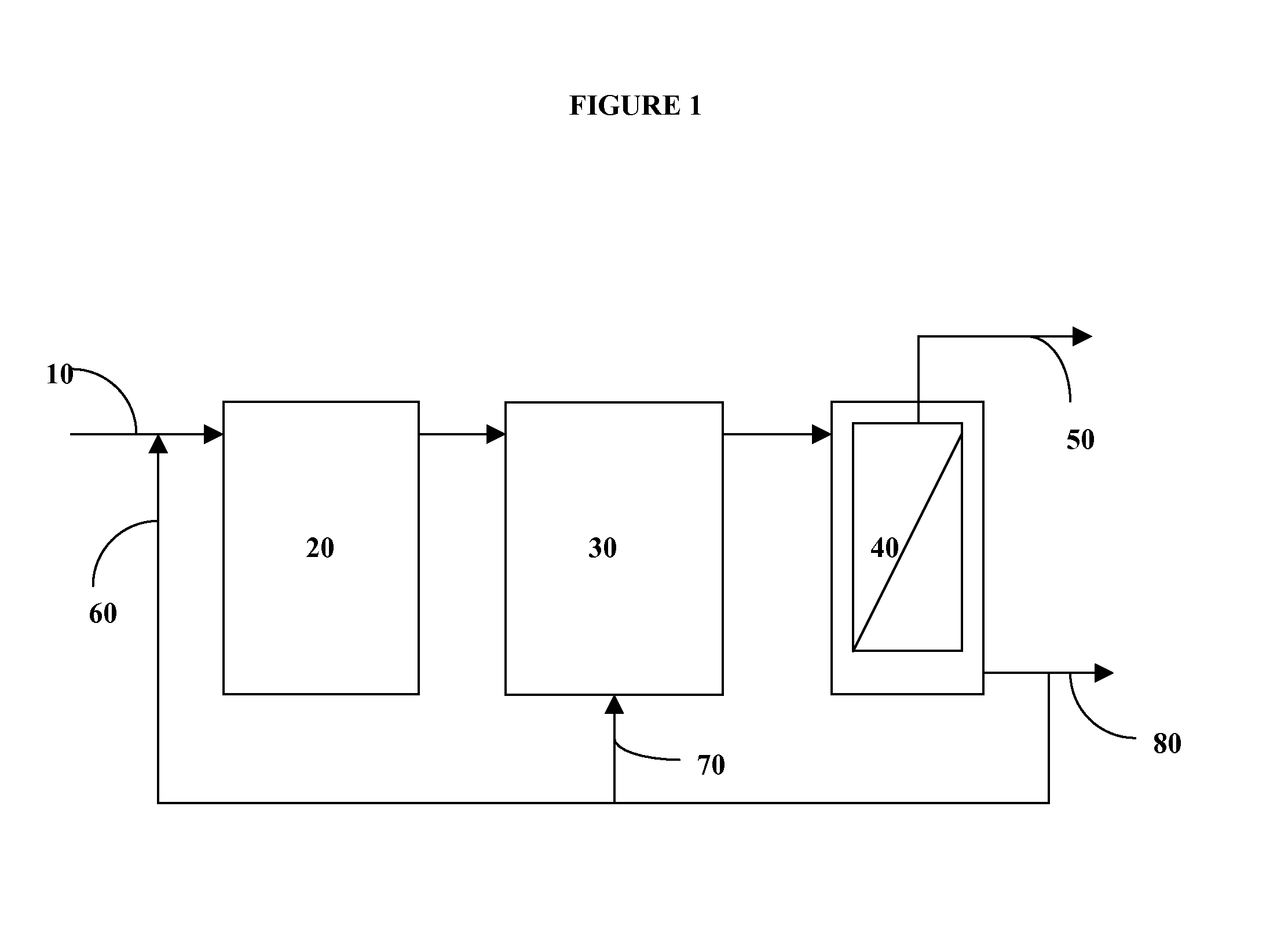Method of conditioning mixed liquor using a tannin containing polymer
a technology of mixed liquor and tannin, which is applied in the direction of water/sewage treatment, water/sludge/sewage treatment, flocculation/precipitation, etc., can solve the problems of secondary pollution, high cost, and high cost, and achieve the effect of improving the flux
- Summary
- Abstract
- Description
- Claims
- Application Information
AI Technical Summary
Benefits of technology
Problems solved by technology
Method used
Image
Examples
example 1
[0071]The filterability of mixed liquor was evaluated by the Time-to-Filter (TTF) test method. The TTF test method was adapted from Standard Methods (APHA, 1992), Method #271 OH. The test consisted of placing a mixed liquor sample in a Buchner funnel with a filter paper, applying a vacuum, and measuring the time required to filter 50% of the original mixed liquor sample.
[0072]In the TTF tests, one 9-cm Whatman GF / C (Catalog #1822 090) filter paper was placed in a Buchner funnel and was wet to form a good seal. A vacuum pump with a pressure regulator was used, and the vacuum pressure was adjusted to 51 kPa (15 inch Hg). A 200 ml mixed liquor sample was added to the Buchner funnel, and the time to filter 100 ml, which corresponded to 50% of the initial sample volume, was recorded. Time to filter is expressed in seconds and usually varies from 50 seconds to 2000 seconds.
[0073]Prior to the TTF test, a standard Jar Test was conducted to ensure that the added chemical was mixed well with ...
example 2
[0078]The tannin containing polymer can be added in combination with one or more other water soluble sludge filterability improvement polymers to the activated sludge in a MBR for combined membrane filterability enhancement. The tannin containing polymer can also be added in combination with sludge filterability improvement inorganic coagulants to the mixed liquor to improve its filterability.
[0079]Following the same procedures as described in Example 1 for both the TTF Test and the Jar Test, a series of tests were conducted to test the combination of the tannin containing polymer and an inorganic alum coagulant on filterability improvement. The alum coagulant product contained 50% actives. The two chemicals were added to the mixed liquor separately. The mixed liquor samples were taken from the municipal wastewater treatment plant at GE China Technology Center (sample taken from the activated sludge recycling line where the MLSS concentration was above 10 g / L). The results are shown...
PUM
 Login to View More
Login to View More Abstract
Description
Claims
Application Information
 Login to View More
Login to View More - R&D
- Intellectual Property
- Life Sciences
- Materials
- Tech Scout
- Unparalleled Data Quality
- Higher Quality Content
- 60% Fewer Hallucinations
Browse by: Latest US Patents, China's latest patents, Technical Efficacy Thesaurus, Application Domain, Technology Topic, Popular Technical Reports.
© 2025 PatSnap. All rights reserved.Legal|Privacy policy|Modern Slavery Act Transparency Statement|Sitemap|About US| Contact US: help@patsnap.com


